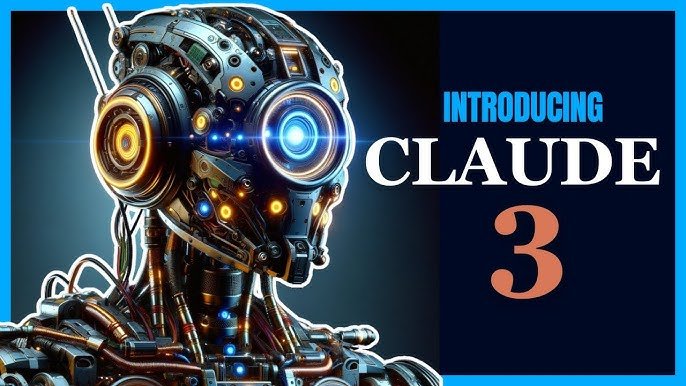The past week has been abuzz with groundbreaking developments in the field of artificial intelligence (AI), featuring major announcements and updates. Among the notable highlights were the debut of Claude 3, a significant acquisition by OpenAI, and the introduction of Stable Diffusion 3. Let’s take a closer look at these advancements reshaping the landscape of AI technology.
Claude 3 Revolutionizes AI Capabilities
Anthropic, a frontrunner in the AI sector, recently unveiled Claude 3, heralding it as a remarkable advancement surpassing even the renowned ChatGPT model. With its release, Anthropic offers a trio of variants – Haiku, Sonet, and Opus – catering to diverse user requirements. Haiku serves as an entry-level option, providing cost-effective solutions, while Opus emerges as the powerhouse among the three, boasting unmatched intelligence and power.
One of the distinguishing features of Claude 3 is its ability to deliver near-human levels of comprehension and proficiency across various tasks, ranging from basic mathematics to multilingual conversations. Developers praise the model’s division into three variants, allowing users to strike an optimal balance between intelligence, speed, and cost for their specific applications.
Exploring the Capabilities of Claude 3
Beyond cognitive tasks, Claude 3 showcases significant advancements in vision capabilities, particularly with Opus excelling in image recognition compared to its predecessors. Moreover, the model demonstrates improvements in response accuracy and nuanced understanding, enhancing user experience and reliability.
While Opus and Sonet are already accessible as APIs in numerous countries, Haiku is slated to join them soon, promising broader accessibility and utility across diverse applications.
Remarkable Features of Claude 3
Claude 3 represents a significant leap in AI evolution, combining intelligence, versatility, and ease of use to empower users across various domains. Claude 3 comprises three state-of-the-art models, each designed for specific cognitive tasks:
Claude 3 Haiku: A versatile model with a focus on open-ended conversation, collaboration, coding tasks, and text-related activities.
Claude 3 Sonnet: Offers improved performance over its predecessors, excelling in tasks requiring rapid responses, such as knowledge retrieval or sales automation.
Claude 3 Opus: The most intelligent model, exhibiting near-human comprehension and fluency. It sets new benchmarks across reasoning, mathematics, coding, multi-lingual understanding, and vision quality.
Industry Benchmarks:
Opus: Outperforms peers on common evaluation benchmarks for AI systems, including expert knowledge, reasoning, and basic mathematics. It leads the frontier of general intelligence.
Sonnet: Faster than previous Claude models, especially adept at rapid responses.
Haiku: The fastest and most cost-effective model for its intelligence category, ideal for real-time tasks.
Sophisticated Vision Capabilities:
The Claude 3 models process various visual formats, including photos, charts, graphs, and technical diagrams. This feature is particularly valuable for enterprise customers with knowledge bases encoded in diverse formats.
Reduced Refusals:
Unlike previous generations, Claude 3 models are significantly less likely to refuse to answer prompts that push system boundaries. They exhibit a nuanced understanding of requests and recognize real harm.
Beyond Textual Limits:
Claude 3 moves beyond text-only interaction, expanding its capabilities beyond mere text-based communication.
It overcomes the “yes” bot phenomenon, minimizing unnecessary refusals.
Fact-Checking and Contextual Understanding:
Claude 3 excels at fact-checking and demonstrates a more nuanced understanding of context.
It actively avoids unnecessary refusals, enhancing its usefulness.
Diligent Secretary:
Claude 3 can serve as an efficient and reliable assistant, handling a wide range of tasks with intelligence and speed.
Stable Diffusion 3: Pioneering Multimodal AI
In tandem with Claud 3’s debut, Stability AI introduced Stable Diffusion 3, marking a significant milestone in multimodal AI. Leveraging the innovative MMDI architecture, Stable Diffusion 3 seamlessly integrates diffusion and transformer models to achieve unparalleled performance in image generation.
Despite initial limitations in text generation and image refinement, developers report substantial progress with Stable Diffusion 3, demonstrating competitive performance across various evaluation criteria. Anticipation mounts for its public release as it promises to revolutionize text-to-image generation systems and impact various industries.
Rufus, Amazon’s AI Shopping Assistant
In a contrasting scenario, Amazon’s AI-powered shopping assistant, Rufus, faced scrutiny during its initial testing phase. Despite Amazon’s claims of Rufus being an expert shopping assistant capable of providing personalized recommendations, testers found it lacking. Rufus often provided generic suggestions akin to those found in how-to articles, raising questions about its reliability and efficacy.
Critics highlighted the risks associated with rushed AI deployment, emphasizing the importance of thorough testing and refinement. While Rufus remains under development, the incident underscores the need for caution in AI implementation to avoid user frustration and disappointment.
Wix Introduces User-Friendly AI Website Builder
Amidst the mixed reception of Rufus, Wix, a leading website building platform, introduced its AI Builder with promising results. The AI Builder simplifies website creation through a conversational interface, guiding users effortlessly through the design process.
By streamlining website creation and eliminating technical barriers, Wix’s AI Builder sets a positive example of leveraging AI to enhance user experiences effectively. As AI continues to evolve, these advancements underscore the transformative potential of AI technology across various domains.

